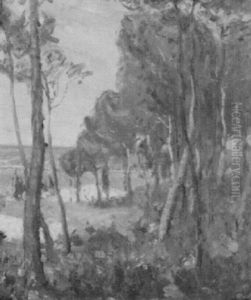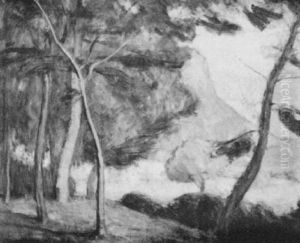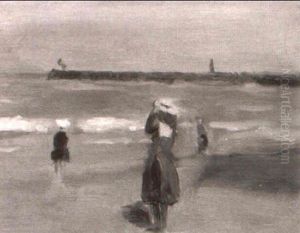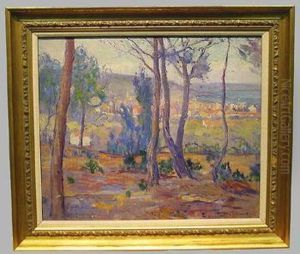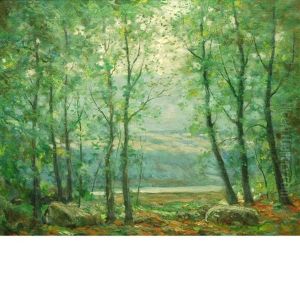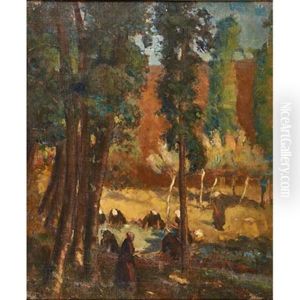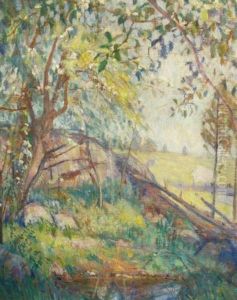Lucien Abrams Paintings
Lucien Abrams was an American artist born on September 29, 1870, in Seville, Ohio. He grew up in Texas, where his family moved during his childhood. Abrams showed an early interest in art, which was nurtured by his environment and experiences in the American Southwest. He pursued formal education in art, which took him far from Texas, to some of the most prestigious art schools in the United States and Europe.
Abrams studied at the Art Students League in New York and later continued his education in Paris at the Académie Julian and the École des Beaux-Arts. This period in Europe was crucial for his development as an artist, as he was exposed to the works of the Impressionists, which greatly influenced his style. He embraced Impressionism's fascination with light and color, which became hallmarks of his work. After his studies, Abrams spent time traveling and painting in Europe, capturing landscapes and scenes of daily life.
Returning to the United States, Abrams divided his time between Texas and New York and became part of the early 20th-century American art scene. His works were exhibited in prestigious venues, including the Pennsylvania Academy of the Fine Arts, the Art Institute of Chicago, and the National Academy of Design. Abrams was known for his landscapes, which often featured scenes from the American Southwest, as well as Europe. His ability to capture the nuances of light and atmosphere in his paintings was admired by critics and loved by the public.
Throughout his career, Abrams remained dedicated to the Impressionist style, even as artistic trends moved towards Modernism. His works are characterized by a vivid color palette and loose brushwork, aiming to capture the essence of a moment or scene rather than its detailed realism. Lucien Abrams' contribution to American art was significant, as he bridged the traditions of European Impressionism with American subjects, particularly those of the Southwest.
Lucien Abrams passed away on November 1, 1941, in New York City. Despite the evolution of art styles and trends, his works have continued to be appreciated for their beauty and emotional depth. Today, his paintings are part of the collections of several museums and have been featured in exhibitions dedicated to American Impressionism and the art of the Southwest. Abrams' legacy as an artist lies in his vibrant landscapes and the subtle yet powerful way he captured the light and mood of his subjects.

